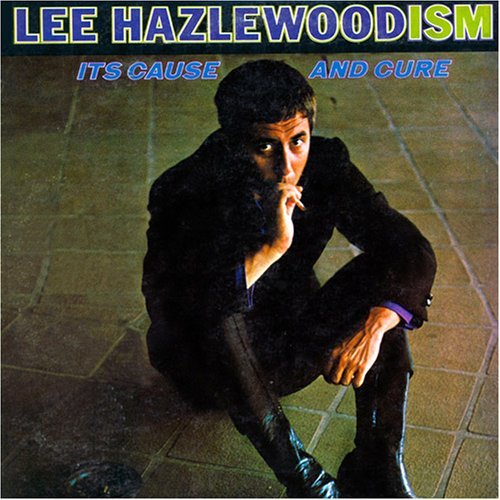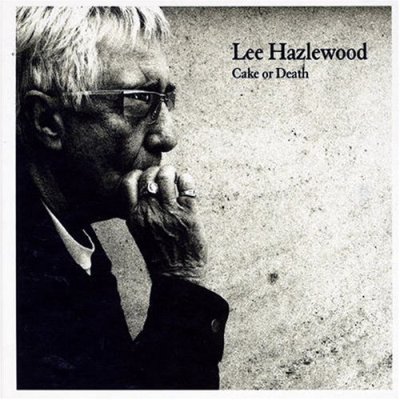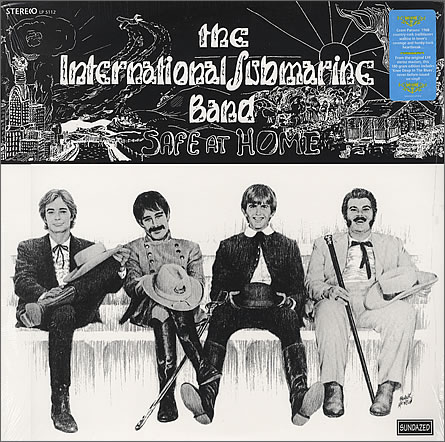Lee Hazlewood: 1928-2007
The pop svengali’s obituary
Lee Hazlewood, the pop svengali who wrote the Nancy Sinatra hit ‘These Boots Are Made For Walkin”, died of cancer in Las Vegas on Saturday (August 4). He was 78. Hazlewood, originally from Oklahoma, was the man credited with much of the success of Sinatra‘s career — modelling her image and writing songs for her. He wrote and produced nine albums in total for her. After writing songs as a child, Hazlewood began his musical career as a DJ in Arizona in 1953. [via the NME]
Mr. Hazlewood was also an eccentric visionary who pioneered several genres. As a solo artist, he created a sound often referred to as “cowboy psychedelia” for its fusion of country-western, symphonic pop orchestration and trippy decadence. A hard-living crank with a trademark mustache, he sang his wry tales of losers and jilted lovers in a striking, world-weary baritone.
“It has a gravity that allows him to be sincere and tongue-in-cheek at the same time,” the rocker Beck told
The New York Times earlier this year. “It’s that immense voice of experience, not expecting any kindness from humanity other than a spare cigarette.”
[As Duane] Eddy’s co-writer and producer, Mr. Hazlewood helped invent twang-rock by sticking a microphone and an amp in a grain elevator, creating a ghostly reverb effect. Together they enjoyed a long string of hits, including “Rebel Rouser.” Mr. Hazlewood also helped develop country-rock; he released an album by Gram Parsons’s early group the International Submarine Band on his LHI label in 1968.
After an underappreciated solo album, “Trouble Is a Lonesome Town,” in 1963, Mr. Hazlewood, who had relocated to Los Angeles, found himself embraced by the Rat Pack. At Frank Sinatra’s request, he began working with his daughter Nancy.
“He was part Henry Higgins and part Sigmund Freud,” Ms. Sinatra told The Times this year, referring to Mr. Hazlewood’s campaign to change her image. Cheeky video footage for “These Boots Are Made for Walkin'” turned her into a major sex symbol in the mid-’60s. That song has since been used in scores of movies, television shows and commercials, and performed or recorded by hundreds of artists.
Mr. Hazlewood recorded many hit duets with Ms. Sinatra in the 1960s, including “Some Velvet Morning.” But at the height of his success, he left for Sweden, where he recorded experimental solo albums in the 1970s.
He moved about Europe and the United States in relative obscurity until alternative rockers began to rediscover him in the 1990s, including Steve Shelley of Sonic Youth, who reissued Mr. Hazlewood’s solo albums on his Smells Like Records label. Mr. Hazlewood began touring and recording again.
“If I didn’t have any other hit but ‘Boots,’ I should be a thankful person,” Mr. Hazlewood said in January. “It’s eternal, I guess — a living thing.”
NEW YORK TIMES: The Lonesome Horny Death Of A Sonovabitch
WIKIPEDIA: Some velvet mornin’ when I’m straight/I’m gonna open up your gate/ And maybe tell you ’bout Phaedra/ And how she gave me life/ And how she made it end/ Some velvet mornin’ when I’m straight
PRIMAL SCREAM + KATE MOSS: Some Velvet Morning
NEWYORKNIGHTTRAIN: Yesterday we lost one of post-war America’s coolest, most prolific, and secretly important pop artists/composers/producers. While Lee Hazlewood will perhaps always be best remembered for his work with Nancy Sinatra, writing and producing “These Boots Were Made For Walking” as well as their hit duet “Some Velvet Morning,” to his growing cult, which definitely includes me and a number of my friends and acquaintances, Lee Hazlewood is an everything man of pop music — up there with Phil Spector, Brian Wilson, and David Axelrod in terms of visionary production, Lou Reed, Kris Kristopherson, and Leonard Cohen in poignant songwriting, and Nick Cave, Johnny Cash, and Serge Gainsbourg in distinctive delivery.
Johnny Cash, and Serge Gainsbourg in distinctive delivery.
I had the good fortune of seeing the man speak at an Anthology Film Archives presentation of his films about a decade ago that featured a documentary about his Las Vegas stint with Nancy, a collection of videos from his under-rated and flawless Cowboy in Sweden album, and an odd collection of late 1970s videos in which he interpreted the songs of Harry Chapin. He showed up wearing cowboy boots with his beautiful younger wife and blatantly disregarded the theater’s request that he not smoke. A short man with a big voice, Lee was everything in person that you would have expected from his recordings — a heroic rebel, a friendly mensch, and a badass in general.
And this charming combination of contrarianism, humanism, and cool, when combined with his brilliant aesthetics and poetic imagination, are exactly what distinguishes Hazlewood from the greatest generation? of contemporary pop. His work, a synthesis of the rustic and the urbane, chock full of signifiers of both high art and populism, evolved across the years through his battles with the music industry — remaining, for the most part, give or take a Chapin cover, uncompromising, unique, and even timelessly hip all the way up until his self-conscious swan song Cake or Death last year. MORE
NANCY SINATRA: Bang, Bang*
The YouTube ID of T5Xl0Qry-hA&mode=related&search= is invalid.*Produced By Lee Hazelwood


